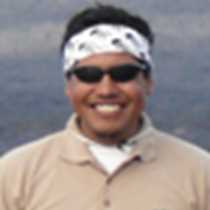The Galapagos Archipelago is combination of wildlife and natural history. Today we had a fantastic exploration by visiting the Center of the Islands: North Seymour and Rabida. After a comfortable dry landing we started exploring North Seymour, and our welcome committee was the impressive sea birds that were found flying all over the place. The presence of land iguanas combined with Galapagos mockingbirds, great and magnificent frigate birds, and Galapagos sea lions made us feel inside a wildlife paradise. One of the most attractive and interesting species was the blue footed booby. North Seymour is a natural bird paradise, so along the coastal area there were nesting blue footed boobies that in a matter of a few weeks will already have the first fledglings of the season.
As soon as we returned onboard the National Geographic Endeavour we started navigation to our next destination: Rabida. Our next adventure of the day was going to be found underwater by deep water snorkeling along the cliffs area. The Galapagos Marine Reserve is considered one of the most attractive places of our planet, and Rabida Island revealed us part of this magnificence of wildlife. Once we got into the water, the presence of colorful reef fishes all over the lava rocks made us feel inside a natural aquarium. A Pacific green sea turtle was the magical species during deep water snorkeling, as it was found feeding at the rocky bottom and swimming close to the surface of the water. White-tipped reef sharks, and black tip sharks were among the biggest surprises of the activity.
A magical Photo hike was the perfect complement of our journey at Rabida Island. Galapagos mockingbirds flying around, blue footed boobies plunge diving into the ocean, and marine iguanas on the rocky cliffs made a perfect contrast of wildlife during the visit. The biggest surprise of the afternoon was a female vermillion flycatcher that was hunting some insects by the Palo Santo tree forest.
At the end of our expedition we enjoyed a magical sunset that was the indicator that tomorrow more adventures await at the living paradise of the Galapagos Islands.









